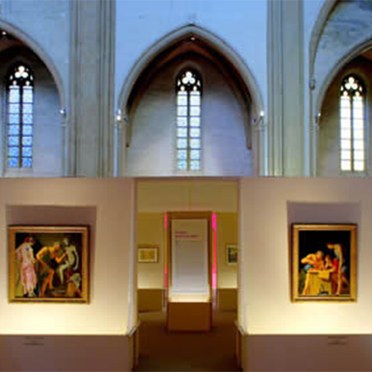MUZEUM AUGUSTYNÓW, FRANCJA
- Lamp efficacy
Lamp efficacy
Ensuring the lamp efficiently converts electricity into light (lm/W).
- Ballast classification
Ballast classification
Controlling the electricity supply to the lamp (Energy Efficiency Index).
- Luminaire distribution
Luminaire distribution
Controlling light emission using optics which bend and shape the light to the correct location.
- System efficacy
System efficacy
Combining optical and thermal control within the luminaire (luminaire lm/W).
- Presence/absence detection
Presence/absence detection
Providing lighting only when it’s needed.
- Daylight detection
Daylight detection
Reducing waste light during daylight hours.
- Constant illuminance
Constant illuminance
Producing the correct lighting levels for the duration of the maintenance period.
- Task-scene setting
Task-scene setting
Allowing the user to set scenes and adapt the lighting to different tasks.
- Timed off
Timed off
Automatic cut-off to turn all lights off during unoccupied hours.
- Task lighting
Task lighting
Lighting task areas with the correct amount of light.
- Zoning of lighting
Zoning of lighting
Zoning lighting in accordance to occupancy patterns or window location.
- Maintenance schedule
Maintenance schedule
Tailoring maintenance schedules in accordance to product age, performance and environment.
- Waste light
Waste light
Eliminating waste light which does not hit the intended target.
- Reflectance
Reflectance
Taking advantage of light which is reflected from the surface within the space.
- Visible smart metering
Visible smart metering
Enabling results of actions to be quickly seen as increased or decreased energy use to encourage responsible energy consumption.
Pierwsze reflektory punktowe 'Graffiti' z Thorn oświetlają Muzeum w Tuluzie
Pierwsza instalacja wykorzystująca nowy regulowany reflektor punktowy Graffiti została ukończona w Muzeum Augustynów w Tuluzie.
Muzeum należy do najstarszych we Francji, usytuowane jest w XIV-wiecznym klasztorze, a od 1793 chroni kolekcję obrazów i rzeźb z okresu od średniowiecza do wieku XX.
Trzydzieści pięć reflektorów punktowych Graffiti M z lampami HIT o mocy 35W oświetla tymczasowy teren wystawowy mieszczący ponad 150 prac, których autorem jest francuski artysta Jacques Stella (1596-1657), podczas gdy 100 listew Micropak, wyposażonych w asymetryczne reflektory, ukryte jest na poziomie parteru.
Wykorzystując elastyczną optykę, reflektory punktowe dają bezstopniową regulację kąta strumienia światła w zakresie 10-35 stopni lub 25-55 stopni poprzez szybki obrót tylnego zespołu.

